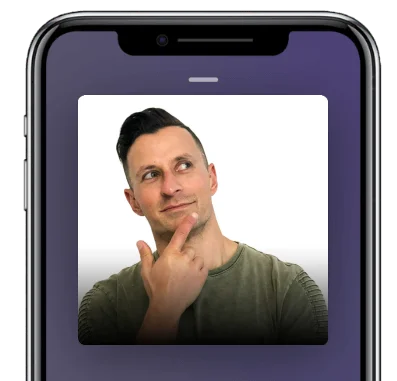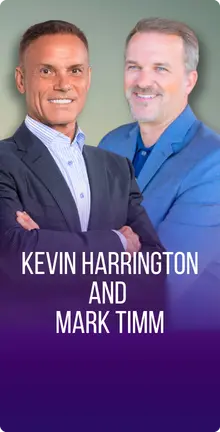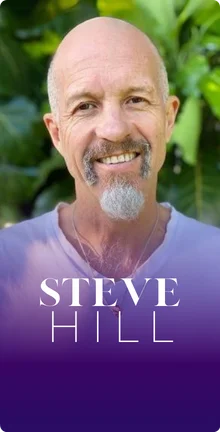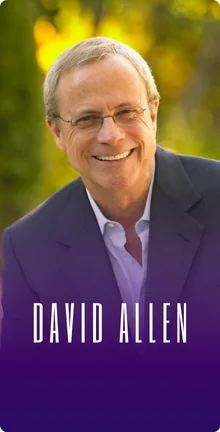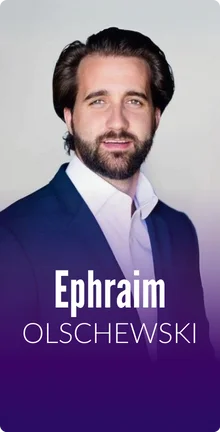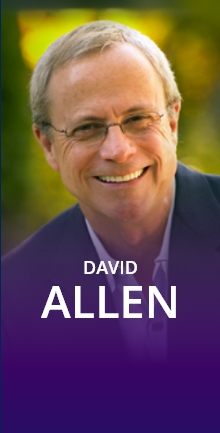It’s an absolute pleasure to be on this show, Stephan.
Let’s first of all, let’s explain to our listeners what inspired you to start Collective Campus and what that is doing out there in the world.
Sure. Collective Campus is a corporate innovation accelerator and our mission is to unlock the lane of potential of people at large organizations to create more impact and to live more fulfilling lives. The inspiration behind the Collective Campus came from my own decade or so in the corporate world where I found myself more or less just adhering to process and policy. Essentially, playing the role of a very well and narrowly defined positioned description.
For anybody who is in that world, who are educated, they’re bright, they want to actually go out and create change, but they are essentially mitigated by this machine, which means they can only do a very narrow set of things, it can be a very unfulfilling place to work. I know from my own experience where whenever I try to propose better ways of doing things, it was just sticking to the position description and just do that.
Nowadays, what we are finding—obviously your audience will be familiar with Moore’s Law—is that large organizations can no longer rely on 5- and 10-year plans. The world changes too quickly. After my foray in the corporate world, I went out, I founded a web startup, and worked on that for a few years. That was a company called HotDesk and that’s when I learned about all of these different techniques and tools that entrepreneurs are using that larger organizations just aren’t but need to.
When I put two and two together—my experience in the corporate world and my experience in entrepreneurship—I found out that a lot of these skills are transferable. That’s when Collective Campus essentially came about so that I could start to embed these tools and techniques into large companies, to help them get better at navigating change, to also empower people within those organizations to actually want to do more than just the nine-to-five, and actually want to create real impact in the world. I’m empowering them to do so.
It's such a thrill to empower others to own their freedom, get out there, and do something they love. Share on XI’ve been running Collective Campus now for five years and worked with about 60 big brands around the world as well as incubated over 100 startups as part of our work with big brands and it continues to grow from there.
That’s very cool. It reminds me of a company in Israel called The Bridge that connects these large corporates in the US, primarily, like Coca-Cola, with Israeli startups that are doing interesting things and helps those startups get to market through those big brands and big corporates. It’s a pretty cool company. I’m not sure you’ve heard of them or not.
I’m familiar with them. It just makes a lot of sense because your large organizations have the domain expertise. They have the assets, networks, resources, the reputation, but what they often lack is the speed, the talent of emerging startups, and when they try and do things internally, they usually get bogged down in a lot of processes.
A lot of these companies are essentially the index for consensus rather than commitment. That means that they have a lot of meetings. As you are aware, when you are doing something fundamentally new that’s fraught with untested assumptions and uncertainty, you need to move really quickly just to figure out what the answers are.
If you are going to call a meeting every time you want to make an inconsequential decision, then you are out of the game before you really began. So when you combine the startups or the scaleups with the large organizations, you’re far more likely to get some sort of mutually beneficial outcomes. That’s what we’ve been doing with a number of companies around the world.
That’s great. These big companies aren’t that nimble anymore and you could incorporate a skunkworks project into that organization that functions essentially like a startup. Then, they have all that capability again that the very early company had and then lost.

This isn’t my term, this is Scott Belsky from Behance. I had him on the show last week and he said, “When large organizations acquire small ones, it requires a degree of organizational self-awareness whereby you need to be aware of your weaknesses and what the organization doesn’t do well, rather than thinking you are the bee’s knees and then trying to embed that startup into your organization and ultimately kill them.”
It’s the same when you are just embarking on some kind of a partnership with a startup. Being cognizant of the fact that maybe, for example, one of your weaknesses could be your procurement process which is really long-winded and slow. It could take several months to onboard a new vendor. Now, that’s not going to work with startups. So, if you are aware of that weakness, then perhaps setting up a parallel process for onboarding companies that makes less than $5 million a year, is something you want to do. Otherwise, if you don’t make any changes internally and you’ve got a bunch of process and policy weaknesses, and then you go out and try to work with startups who are all about speed, testing assumptions, experimentation, breaking things, and all that sort of stuff, then you are probably going to find it very difficult to develop a meaningful relationship.
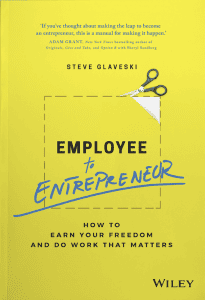
So, how did all these lead to you writing the book, Employee to Entrepreneur?
Good question. I’ve been blogging for years, I probably have 400 or 500 blogposts on the Collective Campus website as well as on my Medium page, but that essentially came out of a lot of people that are either a client of mine or have come along all these years, essentially, asking the question. “How did you go about it? I mean, this corporate job, I don’t quite enjoy it. I don’t think my potential is being optimized, but I’m scared to make that move. I’ve got a mortgage. I’ve got kids to put through school. I’ve got all these expenses. How do you go about it?” That question came up a hell of a lot.
Having written a ton of blogpost that I could draw from and having self-published a couple of books, I thought why not actually provide people with a bit of a roadmap based on my own experiences and based on my own learnings in this space. Having digested hundreds of books, spoken to hundreds of people in the podcast and other places, and just put it into a digestible 200-page book that people can pick up and essentially learn what they need to learn in terms of the ideation process, the experimentation process, the marketing, the sales, and even the bigger, more existential questions around what you want to do in the first place.
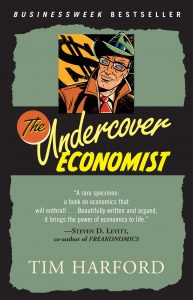
It was also boiled on by Tim Harford who wrote the book The Undercover Economist. I had him on the podcast as well, so it was a lot of serendipity. He basically gave me a non-fiction book proposal template, which I then used to shop around. After 39 or so rejections from publishers and agents, I managed to get in the door with Wiley, one of the world’s biggest business book publishers.
I wrote the book and I never thought that I’d be a published author, but I think in life, one thing I’ve come to learn in this entrepreneurship thing is, luck is really a byproduct of doing the work. The more you do, the more opportunities present themselves. Then, it’s a matter of meeting the opportunity with preparedness.
Having written those blogs, I was in a position where I could write that book and did write that book. Out it came in January of this year. Most of my work is with large organizations and partnering them with startups as well as building their capabilities internally. I really do enjoy, (1) the podcast, and (2) writing for individuals who are out there, because oftentimes, they are the ones that are not bound by any sort of bureaucracy. They’ve got no encumbrances in front of them. Oftentimes they are actually motivated by not just making $50,000 or $100,000 a year, but actually going out there and solving some kind of a problem they see in the world.
If I can empower just one person, I often say I just get thrills from empowering one person to just own their own freedom from the job they hate, get out there and do something that they absolutely love. When I get these unsolicited messages in LinkedIn saying, “Hey, Steve. Picked up your book. Absolutely loved it. It inspired me to go out and do my own thing,” that’s a really rewarding thing for me.
I bet. I’ve gotten some of those sorts of emails myself. I have three books I published with O’Reilly. I’m curious, what do you do with those testimonials or stories that are shared? Sometimes they are just on email. Sometimes they are posted on Facebook. Sometimes you even get a video. That one’s rare, but amazing if you get a video that you can add to your website. What do you do to leverage those wonderful testimonials that come in?
Luck is just a byproduct of doing the necessary work. Share on XIt’s a good question and it’s perhaps something that I could be doing better. Oftentimes when they do come in, I do ask them to just spend a minute sharing what they’ve shared with me via Amazon and perhaps leaving a book review. It could be that they reached out to talk about the podcast and again I’ll say, “Here’s the link to the Apple podcast reviews. I would really love it if you would leave a review reflecting your thoughts.”
Sometimes, where we take an extra step with client testimonials is more so with our corporate client testimonials. On our website, the Collective Campus site, we’ve got a section with case studies and it’s about 35 or so case studies on that page with testimonials, oftentimes with videos from clients.
When we are pulling a prospect through our sales funnel, there will be a point out which we will then share those testimonials with them, share those case studies, because the biggest thing with getting particularly large organizations over the line is that social proof piece. As I said earlier, they are over-index for consensus as opposed to commitment. They want to be absolutely sure about something before they sign on the dotted line, especially if they’re spending five or six figures on something. Therefore, the more you can provide by way of social proof to relate any concerns they have about the ability to work with organizations like this, the more likely you’ll be to get them over the line.
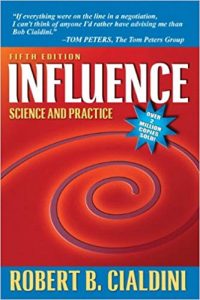
Social proof, very important. The term that has been very much popularized by Robert Cialdini in the book, Influence. He’s going to be a guest coming up here pretty soon.
Awesome.
I’m very excited about that. I’m curious if you have had any huge epiphanies, transformations, or big wins that happened because of implementing something specifically from the Influence book or from his follow up the Pre-Suasion book?
I guess the rule of reciprocation is probably the biggest thing I took out of that book. I think like most books, you read this book, they might be 300-400 pages long, but there is always one, two or three sort of golden nuggets that stay with you. With respect to reciprocation, I guess it’s just for me being a matter of doing things for other people without expecting anything in return. But oftentimes, what happens is you do get things in return. You get introductions to third parties who are looking for services just like yours.
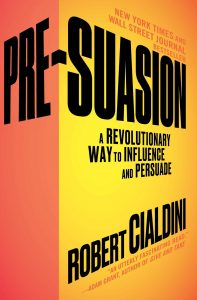
This is also something that was echoed by Brad Feld, the venture capitalist, who I had on my podcast maybe a year-and-a-half or two years ago, where he basically talked about the startup ecosystem in Boulder, Colorado and his hashtag of #givefirst, which is all about giving first, whether you are a seasoned entrepreneur, venture capitalist, or someone coming up. Just give first and don’t expect anything in return.
The more you do that, the more you create value in the ecosystem. The more there is a value associated with your brand and the more people, I suppose then feel they should repay whatever you’ve done for them. Whether it’s just giving them some simple advice, whether it’s connecting them with someone else, whatever the case is. The more time you spend in an entrepreneurial ecosystem or any other ecosystem, the more people you know and the more you can make connections. You may not think that’s a valuable thing but it’s one the most valuable things you can do. I would say that, that’s being one of the big things for me.
It doesn’t necessarily have to be one of the things. If I think about the Future Squared podcast, I started that more or less as a labor of love and I had about 60 episodes recorded and published before someone who was listening to the show reached out and said, “Hey, thanks so much for running this program. I’ve learned a hell of a lot from the guest you had on the show. By the way, I’m doing some work with this law firm and they’re thinking about running a startup accelerator program. Would you like an introduction?” I’m like, “Yes, definitely.”
And that led to our first big six-figure client which gave us the “runway” we needed to buy us the time to really get to that next step and lay the foundations. This was a few years ago. Since then we haven’t looked back. The business has gone from shrink to strength, but it was really just about putting stuff out to the world that can help people with no real intention to monetize or anything and it just came back in growth.
It’s like business karma. right?
Yeah.

So you give without the underlying drive to get something in return, so the universe rewards you for it.
One hundred percent.
I’ve seen a lot of that happen inside the JVMM group—Joint Venture Mastermind—that we’re both a part of. That’s actually how I got to know who you were. There’s so much generosity happening in that group. People sharing their online courses for free that normally cost hundreds or thousands of dollars just because you are a JVMM member and so forth. It’s a really cool stuff. I’m grateful for JVMM for putting us together.
You mentioned there were some nuggets that you got from Robert Cialdini’s book. What about the biggest nugget that somebody who read your book Employee to Entrepreneur would say are the one, two, or three big nuggets, which kind of put you in a little bit of an awkward position since you are the author, but I’m curious if you could put yourself in the reader’s shoes. What would that person say?
The answer to that, I suppose, I’d have to caveat by saying, it depends on who the reader is and where they are on their learning journey. If they’ve never picked up a book about entrepreneurship, they are currently in the corporate world, and they want to make the move—let’s go with that sort of customer persona—then I would say what they would learn the golden nugget, one would be that perhaps they don’t need to become an entrepreneur which is perhaps a bit antithetical to the title of the book.
One thing I find is that a lot of people who want to become entrepreneurs, who are currently in the corporate world, maybe it’s because they are just comfortably miserable in their current job. Perhaps they think entrepreneurship is the answer because then they’ve got their freedom and they can be their own boss, but oftentimes, it means working twice as hard for half the money for the first year or two. Perhaps that’s not the answer for them.
In an environment of rapid change and volatility, you should be optimizing traits like adaptability, resilience, and comfort with ambiguity. Share on XPerhaps the answer could be just making a lateral move within that current organization, joining another company that’s perhaps not as bureaucratic. Perhaps upscaling in a different area and just going down a different career path or perhaps joining a startup or a scaleup that’s already funded, that already has product-market fit to some degree and they can join them and perhaps enjoy the benefits of being both an employee but in that entrepreneurial environment. That’s one thing that they would potentially take out of it, well definitely take out of it if you haven’t read books about entrepreneurship.
Two would be, the two biggest pitfalls that most entrepreneurs, particularly first-time entrepreneurs fall into is one, jumping to conclusions. Oftentimes, they all have these big ideas and they’ll go out and engage, say, in app development agency of some kind and drop $50,000 to build this app that they think the entire world will absolutely love, then spend more money on a marketing campaign, not tell anyone about why they are building it because they want to be in stealth mode. They don’t want anyone to steal their idea. What happens is, inevitably 99 times out of 100, it’s basically crickets. As a by-product of that, they end up burning a big hole in their pocket and going back to the corporate world, never to try entrepreneurship again.
The second big pitfall is analysis paralysis, particularly if they’ve come out of the corporate world where they like their big plans and whatnot. They might apply the same thinking to their business and have a 50-100 page business plan, “Here’s my strategy for custom acquisition. Here’s my strategy for X, for Y, for Z.” But if you’re building something fundamentally new, then you don’t really know the answers to those things so you are better off just getting out the building from day one, testing your assumptions and going from there.
The best way to avoid those two pitfalls is to determine what assumptions underpin your business. Build some kind of low fidelity prototype to test them. That could be something as simple as talking to people, running ads online, building landing pages, just whatever it is to start collecting data to validate those assumptions, and then moving forward from there.
For example, if I was proverbially or hypothetically setting up, say, Uber back in 2007, rather than build the app, rather than onboard hundreds of drivers, rather than spend a ton of money on marketing, I could just go out to a busy taxi rank on a Saturday where 20 or 30 people are waiting in line and just proceed to walk down that line and ask people if they’ll be willing to pay $20 to get home in a private car and just see how many people actually say yes. What does that customer persona look like? Does everybody say no? That’s a quick, cheap, low fidelity way to start testing assumptions that underpin your business idea.
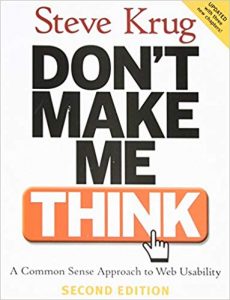
That reminds me, there’s a whole chapter in the book, Don’t Make Me Think by Steve Krug—love that book. It’s all about impromptu-focused groups and how you can just on no budget, run a focus group like what you just described. It’s really great.
100%. Sometimes we have this innate desire to avoid doing the work and then do other work like insecurity work, spending time behind our computer and digesting IBISWorld, Forrester, and Ghana research reports about the market, basically doing anything and everything other than actually building something, getting out there, talking to customers, and doing the stuff that’s actually really going to move the needle on our business or on our idea.
Making those cold calls, speaking to people, that’s really the hard stuff. That’s stuff that innately, I guess, we got this biological predisposition away from because that ultimately can lead to rejection. None of us wants to be ostracized from the tribe, so rather than do that, we just sit behind the computer because that’s nice and comfortable, and convinces us that we are actually doing the work, but it’s not really serving us that much.
Another model that I think fits here too is from Tony Robbins who talks about how most people are certainty-driven. There are six human needs: certainty, variety, significance, love/connection, contribution, and growth. So many of us are certainty driven, that’s why folks don’t work for themselves. They work for the man. They don’t take huge risks because they want the certainty, the comfort of safety. It’s a fallacy, actually. There is no certainty, at least not in our reality. In Kabbalah, they teach that certainty is of another realm and it’s not in this realm. There really is no certainty. So, a pretty interesting idea.
It’s interesting you should say about the certainty fallacy or the certainty paradox nowadays because people talk about Moore’s Law and whatnot, but oftentimes they are not put into perspective.
I love what Peter Diamandis said, where he says, “If you took a one-meter step today, double that everyday for 30 days. By the end of the 30 days, you would have walked over 1,049,000,000 meters, which is enough to walk around the world 26 times,” and that all started with one meter doubling it 30 times which is essentially the nature of Moore’s Law which is the doubling of computing power every 18 or so months.

We are now at this inflection point where we’ve been enjoying this growth curve for 50 years. That certainty that people once associated with, say, accounting, with law, with these ultimately process-oriented tasks, that certainty is fading away.
NPR published a report recently which found that accounting and audit jobs face something like a 95% chance of being automated in the next 10-15 years. I think in an environment of rapid change and volatility, you should be optimizing for character traits like adaptability, resilience, comfort with ambiguity. Entrepreneurship is one field whereby you get those characters attributes in droves. You develop those attributes in droves and you are far more likely to succeed in a fast-moving environment.
Paradoxically, entrepreneurship is becoming the thing that’s perhaps more certain to give you a positive outcome in the 21st century than studying something that is process-oriented and very likely to be automated.
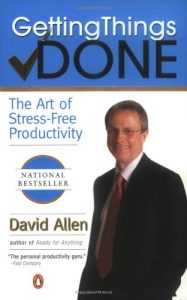
I just interviewed David Allen, author of Getting Things Done. In fact, that was last week’s episode. He talked about how there’s a statistic that over 50% of people are self-employed and the trajectory of that is very significant. The idea of us being employees is going by the wayside and even if we are working for a company, it’s as an independent agent, as a freelancer, as a vendor, or owner of our business. That’s a game-changer for many folks because they’re used to the certainty of a steady paycheck. If you are in business or a freelancer, or whatever, that certainty or predictability goes away.
I couldn’t agree more. It’s interesting. Ronald Coase, he was an economist back in the 1930s and published a foundational journal called The Nature of the Firm, in which he found that organizations are likely to keep growing so long as their internal transaction costs are cheaper than their external transaction cost.
For much of the 20th century, in fact, for the first part of the 21st century, it was cheaper to do things internally, so firms kept growing. Just look at this conversation, for example. This would have been much harder to just record a podcast and distribute it to the world 20 years ago than it was today, but to onboard skills in whatever you need from outside of your organization from anywhere in the world, you could do that quickly online and to automate a lot of tasks that were once done by people, you could do that nowadays.
Nowadays, external transaction costs are fast coming down to a point where they are cheaper than internal transaction costs. So, you can build a company, you can work for yourself or you can have a small team that essentially operates like a team of 20, or 30, or 40 by leveraging those external transaction costs. That’s why large companies who have a lot of people internally, they have thousands of employees, they might find it difficult to compete in 5 or 10 years’ time. They are already struggling in various respects because those external transaction costs are lower and that organizations who optimize for that, who keep their core team low are far more likely to succeed.
I think we are going to see a hell of a lot of people, a lot of fragmentation in the market where you have rather than a few big behemoths potentially many small organizations who punch way above their weight.
Just give and don't expect anything in return. Let the universe run its course. Share on XSpeaking of punching above your weight, you mentioned Peter Diamandis. I’m just so impressed by him and what he was able to do to get the XPrize off the ground. That is the ultimate punching above your weight. He announced a $10 million prize to the first winner, building a spaceship that goes out in orbit and brings passengers safely back then does another trip in two weeks or whatever.
He didn’t have any of the funding of the $10 million prize at that time he announced it. In fact, it took him years to find that funding. Years and years. Lucky for him, nobody called him on this and said, “Show me where the money is sitting in the bank.” Or “Okay, I think we just won your prize. Where’s the money?” Thank goodness that didn’t happen to him, but that was ballsy.

I think Julian Guthrie wrote the book, How to Make a Spaceship, which recounts the whole story. It’s a fascinating story of persistence and not only persistence but taking the proverbial moonshot, persisting in the face of insurmountable odds. I think he was essentially inspired by Charles Lindbergh and his maiden voyage from New York to Paris in one of those old, rickety, light airplanes back in the 1920s. I think that was $5000 or something to that effect. It’s a really fascinating story and I think it’s something that a lot of entrepreneurs who perhaps are starting out or perhaps struggling with their own rejection after rejection, unable to raise capital, unable to get customers, read their book. If you are just trying to sell some Software as a Service and Peter Diamandis managed to raise $10 million to get private space flight going, then stay on the course.
One concept that Peter had shared made this all possible for him was the idea of super credibility. When he made the announcement of the XPrize, he had a whole bunch of astronauts on stage with him. He had a former director of NASA on stage with him. Nobody thought to ask, “Where’s the money?” because all the big names in the space industry were there with him on stage making the announcement. It was pretty clever.
Something that a lot of startups and entrepreneurs can learn from there and apply is essentially just putting together some kind of an advisory board and having that on their website in the About Us page. Having some people who are potentially heavy hitters, non-executive directors and things like that on your board, so that when you are out there pitching your idea to large organizations, they might say, “How big is your team?”
And you might only have a team of three, but you’ve got these advisors who are well-known and reputable in that particular industry. That can help you get customers over the line but also raise capital as well.
Do you have that in your company? Do you have some huge names, like a billionaire or something on your board of advisers or on your board of directors?
We don’t specifically feel the need to ourselves. However, I did for another business of ours. Not for Collective Campus, but for Lemonade Stand which was a children’s entrepreneurship program and on our board of advisers, there we had just a number of personalities from the K-12 Edutech space.
We had teachers who won awards in the ICT space in Australia essentially on our board. That just helped us to gain social proof with our target customer segment, which was schools and parents of young kids because they need to see the social proof. In this case, it was that we had those people on our board, that the curriculum that we had put together and the program outline that we had put together did conform with the Australian standard. We worked with schools to put that together. We worked with people who had clout in the space to put that together.
So, whenever the question came up, “How did you put the curriculum together?” we would just point to the fact that we worked with, for example, one of these names is Steve Brophy and he basically won an award within Australia, one of the most credible ICT guys around and also curriculum designers. We just point to that and that allays any concerns people have.
I guess the big thing there is also this thing of going from objection to condition. You are going to inevitably face objections with whatever you are selling, but they’re really just conditions. So, what is the condition you should be looking to meet to get over said objections so you can get over the line? In this case, one of the conditions for us was, we need this to be aligned with the curriculum in order to invest in it. We allay that by having, (1) the curriculum neatly drawn out and downloadable on the website, but (2) also saying that we worked with notable, reputable people to develop that curriculum. That helps you just allay any concerns and get over the line.
Be a big believer in taking ownership rather than making excuses. Share on XYes, because you just don’t want to address objections. You want to preempt them before they can even articulate them. You’ve thought of what the objection is going to be and then you are going to address that through the board of advisers, through the downloadable files on the websites, through the testimonials, even coaching testimonial givers to share what their biggest objection was before you hit record on that video, or they hit record and say, “Can you please tell me what almost got you to say no to working with my company?” and then that goes into the video or the written testimonial.
It’s very powerful because it’s like, “Yes. I had that same concern,” or, “Oh, I almost didn’t hire Stephan, but I’m so glad I did because even though he is super expensive, the value was there to 10X or 20X our investment and our Google rankings is so much higher than they ever were, blah-blah-blah.” I’m curious, are you doing that with your testimonials? Getting that preempting of objections happening?
In our testimonials, we would ask questions around typical frequently asked questions. One of them could be, “How did you find working with Collective Campus even though we are a much smaller organization than you are?” That’s one of the concerns that large companies have. They are like, “We’re a 10,000-employee company and we are heavily regulated. Have you worked with organizations like ours? If so, what’s it been like?”
So, we present a case study or testimonial from a company, say, the Bank of New Zealand who we worked with earlier this year and that question comes up and they say, “We really love working with you guys. We found that you were flexible, but also cognizant of the fact that we are a large company. You seem to understand the inner workings of a big business like ours but also pushed us to align the way we work with the ways startups work, in a way that was conducive to getting the most out of this program.”
That’s that kind of question whereby it will allay some of those concerns that big companies have, but we will also then, with all of our clients, they are all quite comfortable to provide references. So, we don’t just say, “Hey, here’s a video,” or, “Hear it from us,” or, “Here are some text you can read on the website.” Let’s set up a 15-minute or a 20-minute phone call. You can hear it from the horses’ mouth. You can ask them all the questions you want to ask which I find goes a lot further than just the content that’s on your site. You’ve got to have that there, that’s requisite, that’s an absolute minimum, but if you can connect them with people and let them have that conversation, that’s going to go a lot further I find.
For sure. Before we completely get off the topic of Peter Diamandis, I want to circle back for just one moment. I’m curious, are you involved with his Abundance 360 program or the Abundance Digital?
I’m not at the moment. I do receive all of the emails. However, the closest I have ever come to being associated with that was when one of my good friends went along to Abundance 360 and as a result of that, she got the opportunity to interview Peter Diamandis for my podcast. She was a special guest podcast interviewer, but that was how I hooked Peter Diamandis to appear on my show, I guess.
That’s clever. Very good. I went to the Abundance 360 Conference in January, that was my first time, and wow. It’s like a candy store for futurists. It’s like, “Oh my God, I can’t believe that’s happening, and that’s happening, and that’s happening.” It’s really exciting. I highly recommend it.
The Abundance Digital Program is very inexpensive comparatively. Abundance 360, to attend that three-day event is $15,000. That’s a lot and totally worth it. The Abundance Digital Program where you get to livestream the event from the comfort of your home and you can watch the recordings of the past year’s events and so forth, that I think is $1500, something like that.
It’s very reasonable. That’s something that as people make their way up and perhaps have a little bit of extra money to spend, they may think it’s just a waste of money, but it’s definitely not. Something I’ve gotten into the habit of doing at least a couple of times a year, it’s heading along to this 3–4 day retreats where you do connect with such amazing people and there are the business opportunities that come out of that oftentimes repay the cost 5, 10, 15 times over. Not only the business opportunities but also your own world view and your ability to make better decisions just expands 5X-10X I find. Maybe 10X is a bit much, but it’s definitely well worth the investment rather than the expense, I would say.
I agree. Let’s talk a bit more about Lemonade Stand because this is a very cool initiative that you started. I’m curious why did you start it and what’s the whole story behind this? It’s helping kids become entrepreneurs which I can totally relate to. My oldest daughter started her entrepreneurship journey at 14 years old. I’ll tell you more about that later, but I’d love to hear what that story of the genesis of this Lemonade Stand initiative was.
Definitely. Lemonade Stand, it came about three years ago and it essentially came about by one of our employees. One of my team members basically saying, “I’ve got a young kid. They are not really learning about entrepreneurship in school. Everything we hear about jobs suggests that 40%-60% of today’s job won’t exist in 10-15 years or be automated. We hear that kids today are going to have 15 jobs and maybe seven or eight different types of careers. Why aren’t they learning about entrepreneurship? Let’s put something together.”
I’m a big believer in empowering my team to run experiments. If they have an idea, I don’t shoot it down. I just say, “Let’s find a low fidelity way to test that,” as I was saying earlier. In this case, they literally just put together a one-page event on Eventbrite. We run just some Facebook ads. I think our cost per click is 50 cents and for every 20 clicks, we got a sale. That’s a $10 acquisition and the ticket price for a two-day workshop was $400, so pretty good return.
We sold 20 seats and sold out the class in literally two weeks. For us, customer appetite is definitely validated. But then we need to deliver. We worked with big organizations and startups but dealing with 9-12-year-old kids as was the cohort with the first session we ran was a different proposition. We had to be thinking about allergies. We needed to be thinking about kids throwing tantrums.
One kid threw a chair across the room at one point, he banged his head on the wall at one point, but by the end of the two days, we managed to get them to build prototypes and pitch their ideas. That was great, but I looked at my co-founder and thought, “I didn’t think we can do this again.”
But we sat down, we looked at the customer journey. We spoke to some other kids, programs that were in my local town in Melbourne to find out what they actually do. We learned that we needed a checklist of all the things to be cognizant of and aware of to make sure that things will go better the following time.
We put all that in place. I’m a big believer in taking ownership rather than making excuses or rather than trying something once and saying it didn’t work. Just trace your steps. What could you have done better? Having reflected on that, we made a bunch of changes and we’ve since rolled the program out to over a thousand kids across Melbourne, Sydney, Brisbane, and Singapore in the last three years. We’ve just partnered with the school called Ivanhoe Grammar School here in Victoria. We partnered with them to develop the online version of Lemonade Stand.
What Lemonade Stand actually teaches kids is essentially, (1) how to identify problems worth solving, (2) how to come up with ideas to solve those problems. So, using a number of tools including the design thinking process. (3) how to determine the assumptions that underpin that idea, (4) how to build products that test that idea, and (5) how to pitch that idea. Four-and-a-half should be how to acquire customers to test whether or not the prototype, and there’s actually a market appetite for what you are doing. Ultimately, that’s the actual what. The underlying things that kids get out of it are about adaptability, resilience, and also being comfortable with their ideas being wrong.
As the physicist Richard Feynman, “We can never be sure we’re right. We can only ever be sure we are wrong. When it comes down to the scientific method, we can only ever be sure we are wrong and the more right but never completely right.” Getting kids comfortable with these concepts best prepares them for the volatility of the 21st century, it helps them build those core attributes that I was talking about earlier, that are going to help them survive and thrive in this century. We’ve had kids come through that program.
Speaking of unsolicited messages, I had an 11-year old who graduated from the program message me or email me about two months after the program saying, “Hey, Steve. I just wanted to let you know, I’ve now launched my online business on the back of everything you’ve taught me. I never thought that I’ll be able to do something like this until I took the Lemonade Stand program. I just wanted to say thank you. I’m now making about $1000.”
It was close to $1000 a month he made in his first month and, “If you want to buy a stand-up paddleboard,” which is what he was selling, “here’s a link.” He also tried to sell me on the way out which was absolutely nuts.
That’s awesome. I’ll tell you a little story here about my oldest daughter. She started doing her entrepreneurship journey at 14 years old. She was really passionate about a virtual pet site that was very popular back then called Neopets owned by a TV network called Nickelodeon. She was making a passive income over $1000 months and months. It’s really cool.
Now she’s 28 and has her own SEO consultancy. The apple doesn’t fall far from the tree. She saw that I had built these websites that were making passive income like I had a bed and breakfast directory called Insights making thousands of dollars a month without me putting any time into it at all.
Writers, authors community called writers.net, also similarly making that kind of money. This was pretty innovative back in the day. This was a decade and a half ago or something. Anyway, she’s like, “I want to do that. What you are doing, I want that.” We just sat down and talked about what she’s passionate about.
It’s pretty obvious, Neopets was the thing. There was a market demand because a lot of kids, tens of millions of them, were playing that set of games, taking care of their virtual pets, getting them virtual toys, virtual treats, and all those sorts of stuff. She had a whole game cheat website that was monetized with Google AdSense. That got the ball rolling.
She started speaking at conferences. She got covered in newspapers, on TV and so forth. That launched a whole career. None of that would have probably happened if she hadn’t seen me do this thing with my websites that we’re just side projects. That’s the thing that people need to really understand is that kids get what you model, not what you say. If you are proselytizing do this and do that, and you are doing something completely different, they are only going to pay attention to what you are actually doing not what you are saying. I was modeling the behavior of entrepreneurship and the behavior of passive income generation through these websites. That’s, I think, a really crucial concept. I’m guessing that’s incorporated in the Lemonade Stand as well.
Definitely. Leading by example is absolutely everything, particularly with younger demographics, I think it’s absolutely key. But not only with kids. One thing that comes to mind there is even in business, we at Collective Campus, one of my big on the line philosophy is extreme ownership inspired by Jocko Willink, the ex-navy SEAL.
One of our hairy moments early on our evolution as a company was when we hooked our first big client, a big law firm and it was essentially a four-week course that we put together for them. By week three, I was on the receiving end of a nasty phone call from my contact there who said, “Look, this is all theory. There’s no prac. We thought there’d be actually sitting down and coding and doing stuff like that.”
I basically had to go back to the facilitator and figure out what was going on, but rather than just let this play out and say, “Sorry and it will never happen again,” and ultimately never work with that client again, I sat the team down and said, “Look, I’ve screwed up. Whatever reason I jumped the gun on this, let’s do a customer journey map and see what I could have done better and what we could have done better.”
On the back of that, I had about 20 points of things that we could have done better and I then took ownership. I called the client. I called a meeting. I went over to their office, walked through everything we could have done better. Presented them with, “Here’s what we are going to do about it.” It meant extending the course by a couple of weeks, providing a whole bunch of free value, running a what we call skills consolidation session in Sydney as well as Melbourne.
On the back of that, we were able to get about 10 video testimonials from the students and the client absolutely loved it come to the end of that. On the back of the testimonial from the client, we are able to then work with another 10 or so law firms around the world. By actually demonstrating that behavior, that ownership, I’ve seen that behavior now reflected in the rest of the team. I rarely see anyone make an excuse and even if they make an excuse, that’s a sort of innate thing to default to first, they will then correct themselves and say, “Okay, here’s what I could have done better and here’s what I’m going to do to fix it.” I think leading by example rather than just telling people what to do is absolutely fundamental.
That reminds me of a really powerful definition of the word ‘responsibility’ that I learned from Ephraim Olschewski, who was a past guest on the show. He talks about responsibility being what needs to be done. If it’s not your job, it’s not your duty or obligation, that’s irrelevant. If there’s somebody to blame or somebody to credit for, that’s also irrelevant.
Responsibility is about being the cause of the matter. I think that term comes from Landmark or the predecessor to Landmark education—I forgot the name of it—but it’s been a game-changer for me to see these opportunities, to just jump in, and then do something because it’s the right thing to do. If it’s not going to be me, then who? And if it’s not going to be now, then when?
If you are in the restroom and the soap dispenser is out of soap, rather than to try to get a little bit left out, wash your hands, and go on with your day, find the person who handles the cleaning of the restroom and let them know that there’s no more soap so that other people aren’t affected like you were. That’s just responsibility. Or maybe even be able to respond as another definition that I’ve heard on the past of responsible. If you are responsible, you are response-able. That’s been so freeing, empowering, and I want all kids to get that lesson. It’s just huge.
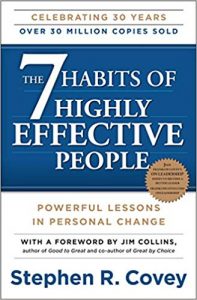
That is huge. That was I think from Stephen Covey’s Seven Habits. The first rule is being proactive and he talks about response-able. I first read that when I was about 22. Like I said, the golden nugget, that for me was the one golden nugget from that book which changed the way I looked at the world and change the way I respond to a situation rather than being in involuntary sort of reactive to external stimuli.
It was about being deliberately responsive to external stimuli and showing up the way you want to show up. When it comes to taking action when something goes wrong, you take action. You empower yourself to do something about it. But if you make an excuse, you essentially become a victim and you basically standstill. You don’t get any better. In fact, you basically regress, I find. That response-able piece is absolutely huge.
Yeah and the part about being the cause in the matter. That is huger than huge. I’m a different person because of that. I’ve gone through a lot of transformation like I’ve talked about this many times on my show. People are probably sick of hearing it. I’m literally unrecognizable from the guy I used to be over a decade ago. You would guess I was 15 years older back then from the photos than I am now. It’s pretty crazy like Benjamin Button.
That transformation is nothing in comparison to the internal changes that I went through with taking workshops, from the spiritual journey I went through in India. Those are 10X or 100X really, the physical transformation that I went through in 2009. Being cause in the matter, just doing it because it needs to be done, and if not you, then who? I wish everybody would get that. We’ll have a different planet right now.

It’s funny you should say, and oftentimes on a podcast, people will ask me, “What books do you recommend to entrepreneurs?” They expect that I’m going to say I read a lot of business books, but oftentimes it’s books like Meditation by Marcus Aurelius or something on self-awareness.
Ultimately, your decisions dictate where you end up. The quality of your life is determined by the quality of your decisions and if you all get your decisions clouded and this haze of emotion and you’re just being super reactive to things, then the quality of your decision will suffer and then your outcomes will suffer from that. By recommending books like Meditations or The Power of Now by Eckhart Tolle, and books like that, or even The Four Agreements by Don Miguel Ruiz, that then lays the foundation for these entrepreneurs to think, go out, and be deliberate, proactive, and response-able rather than just kind of Dad loves dogs and salivating everytime they hear a bell, which doesn’t work very well.
“Oh, Bitcoin is back up again.”
Exactly.

And the Autobiography of a Yogi. That was one I heard Steve Jobs would always give copies of those books to people who came to visit him. It was impactful for him. Awesome stuff. Now I know we are out of time. I’m curious, could I ask if you had an example of a customer journey map that you could share with my listeners?
I don’t know the link on top of my head, but I could definitely share that with you offline.
Perfect. That would be awesome because I’d love for our listeners to see an example of that customer journey map. Any example that you’ve produced, that would show them how transformational that can be to fixing the holes and gaps that occur in the lead nurturing and just taking that customer client through the ultimate outcome of getting them exactly what they are looking for.
Is there any last bit of wisdom that you want to share to leave our listeners with to end off the show?
Sure. Wisdom, I need to search deep for something philosophical. I guess I would say, particularly for first-time entrepreneurs, just don’t compare yourself. Don’t compare yourself to people you used to work within the corporate world because inevitably, they will be making more than you when you first start.
So don’t compare yourself based on just that one metric. You want to be looking at learning over earning when you first make that jump because the first year or two is going to be all about learning. Don’t compare yourself to other entrepreneurs who are already in the game and are potentially doing much better than you. That’s just going to be a cause of ego deflation, bringing you down, and making you feel crappy.
Ultimately, if you are going to compare yourself to anyone, compare yourself to who you are yesterday and trying to get a little bit better every day. If you get one percent better every day, you end up 37 times better come to the end of the year, and that’s where you should be focused on.
Awesome. Thank you so much, Steve. Listeners, now take some action, take what you’ve learned, and apply it to your business, your career, your personal life. There are so many opportunities here. You just have to get off your butt and start taking action. We’ll catch you on the next episode of Get Yourself Optimized. This is your host, Stephan Spencer signing off.
Links and Resources
- Steve Glaveski
- Twitter – Steve Glaveski
- Instagram – Steve Glaveski
- LinkedIn – Steve Glaveski
- Collective Campus
- Lemonade Stand
- Employee to Entrepreneur
- The Undercover Economist
- Influence
- Pre-Suasion
- Don’t Make Me Think
- Getting Things Done
- How to Make a Spaceship
- Seven Habits
- Meditation
- The Power of Now
- The Four Agreements
- Autobiography of a Yogi
- David Allen – previous episode
- Ephraim Olschewski – previous episode
- Moore’s Law
- The Bridge
- Scott Belsky
- Behance
- Tim Harford
- Wiley
- O’Reilly
- Robert Cialdini
- Brad Feld
- Ronald Coase
- The Nature of the Firm
- XPrize
- Julian Guthrie
- Charles Lindberg
- Joint Venture Mastermind
- IBISWorld
- Forrester
- Tony Robbins
- Kabbalah
- Peter Diamandis
- NASA
- Bank of New Zealand
- Abundance 360
- Abundance Digital
- Eventbrite
- Ivanhoe Grammar School
- Richard Feynman
- Neopets
- Nickelodeon
- Writers.net
- Google AdSense
- Jocko Willink
- Benjamin Button
- Bitcoin
- Steve Jobs

